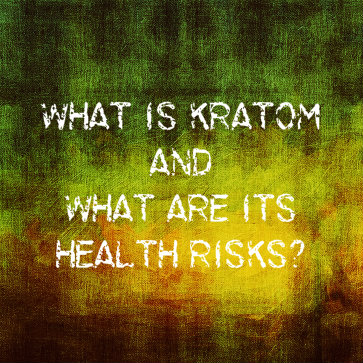What Is Kratom And What Are Its Health Risks?
Kratom is the common name for an herbal drug obtained from a tree species called Mitragnya speciosa. This drug has a history of use in Southeast Asia and current evidence indicates that its use is currently on the rise in the U.S., where consumers can make legal purchases over the Internet. Kratom apparently has the potential to play a role in the treatment of people addicted to opioid drugs or medications. However, it also has the potential to trigger a number of health problems related to drug side effects, interactions with other drugs or medications, or drug addiction and withdrawal.
Forms Of Kratom
 The kratom tree grows naturally in parts of Southeast Asia that include Myanmar, Malaysia and Thailand. Its main active ingredient, called mitragynine, has properties commonly associated with both stimulant drugs/medications and opioid drugs/medications. The stimulant effects of this compound typically appear when the drug is consumed in fairly low doses, while the opioid effects appear when the drug is consumed in relatively high doses. Traditional users of kratom commonly consume the drug by chewing on leaves harvested from M. speciosa trees. Other forms of the drug include tea made from M. speciosa leaves, as well as capsules, powders, extracts and extract resins.
The kratom tree grows naturally in parts of Southeast Asia that include Myanmar, Malaysia and Thailand. Its main active ingredient, called mitragynine, has properties commonly associated with both stimulant drugs/medications and opioid drugs/medications. The stimulant effects of this compound typically appear when the drug is consumed in fairly low doses, while the opioid effects appear when the drug is consumed in relatively high doses. Traditional users of kratom commonly consume the drug by chewing on leaves harvested from M. speciosa trees. Other forms of the drug include tea made from M. speciosa leaves, as well as capsules, powders, extracts and extract resins.
Legal Status And Availability Of Kratom
In the U.S., federally prohibited substances are identified through a law called the Controlled Substances Act; people who violate this law face action from the U.S. Drug Enforcement Administration or DEA. As of 2014, kratom is not listed in the Controlled Substance Act and DEA officials do not track or prosecute the drug’s users. However, the DEA does take steps to track the availability of the drug.
According to figures compiled from two ongoing DEA projects, illicit drug manufacturers have substantially increased their output of kratom products since 2010. In addition, retail outlets located both inside and outside the U.S. sell a range of kratom products, distribute information on kratom use and act as de facto communications networks for kratom users. Estimates published in 2013 by the University of Mississippi indicate that millions of U.S. residents have used kratom either recreationally or as a self-administered treatment for opioid-related withdrawal symptoms or various forms of long-term pain. Despite this fact, the drug has no standing as a researched or officially sanctioned medication.
Kratom Side Effects And Drug Interaction Risks
Known potential side effects of kratom use include excessive sweating, a spike in urine output, appetite decreases, nausea, itchy skin and constipation. In some cases, users of the drug have also experienced seizure symptoms severe enough to require a trip to a hospital emergency room or some other form of medical intervention. One study, published in December 2013 in the Journal of Addictive Diseases, tracked the rate of kratom-related cases reported to poison-control centers in the state of Texas between 1998 and September 2013. No such cases were reported prior to 2009; however 14 cases were logged between 2009 and 2013. Some of the cases involving emergency rooms or poison control centers stem directly from the effects of kratom itself. In addition, current evidence indicates that kratom users who require acute medical care frequently experience some sort of harmful drug interaction when they combine it with another drug or with a legitimate prescription medication.
Addiction And Withdrawal Risks Of Kratom
People who habitually consume kratom can develop an addiction to mitragynine. Potential symptoms of such an addiction include sleeplessness, unusual darkening of the skin, chronic constipation, chronic high urine output and a sharp drop in body weight similar to that found in people affected by anorexia nervosa.
In some cases, habitual users of the drug also develop symptoms of psychosis, the debilitating mental state characterized by a profound lack of mental clarity, highly illogical thought patterns called delusions and some sort of sensory hallucination. Like other forms of addiction, kratom addiction is accompanied by symptoms of withdrawal that appear when users can’t get their expected doses of the drug.
Examples of kratom-related withdrawal symptoms include a runny nose, mood swings, unusually aggressive or hostile behavior, bone aches, muscle aches and muscles spasms in the arms or legs that interfere with normal movement.
Kratom’s Potential Usefulness
Researchers from the University of Mississippi report that kratom does have genuine potential as a treatment for people experiencing withdrawal symptoms associated with the use of opioids drugs/medications, methamphetamine or cocaine. However, further study is needed to confirm the drug’s usefulness in these situations.
Read More About Kratom – Teen Drug Craze



